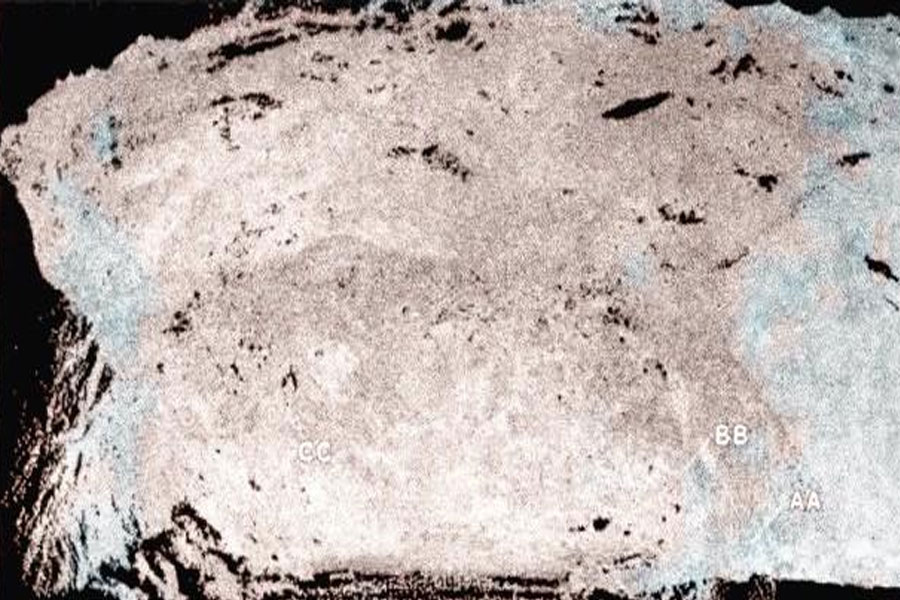In the production of horizontal machining centers, they often encounter parts with high precision and large spans of coaxial holes. The machining of such coaxial holes is difficult. If machining is performed on a vertical machine tool and the method of boring is used, a suitable boring bar cannot be found. Because the boring bar needs to be relatively slender, its rigidity is relatively poor, and it is difficult to ensure the machining accuracy requirements of the coaxial hole system. If an extended bit is used, the coaxiality and surface roughness cannot be guaranteed. Moreover, it is difficult to guarantee the coaxiality and parallelism of the holes due to the flipping and clamping process. Therefore, processing using conventional methods not only fails to meet the requirements of drawings, but also brings a certain loss to production.
In production, a horizontal machining center or a horizontal boring machine is generally used to clamp once, and then turn the table 180 ° to turn the head. This method can not only meet the production efficiency requirements, but also ensure product quality. However, how to find the positive coordinates in the U-turn processing has always been a problem in the processing process. In the following, combining two years of processing experience, we describe two methods for correcting.
Conventional methods
1. Find the X axis coordinate of the rotation center of the worktable
Tools ready: edge finder, dial indicator, three-jaw self-centering chuck, round bar, pressure plate and screw.
step:
①Place the round shaft with three-jaw self-centering chuck on the worktable.
②Adsorb the dial indicator on the main shaft, and rotate the table to continuously move the three-jaw self-centering chuck until the rotation of the dial indicator’s circular axis changes ≤0.005mm when rotating the B axis, and then press the three-jaw self-centering chuck .
③Use the edge finder to find the X value of the center coordinate of the round axis. The X coordinate is the X axis coordinate of the center of the rotating B axis (assuming the X axis coordinate is m).
2. The workpiece is clamped on the worktable
3. Calculate the coordinates
Calculate the length of L1: the X-axis coordinate of the center of rotation of the table is known as m. Now, according to the drawing requirements, use a dial indicator to level the reference of the workpiece A, and then use the edge finder (or other correction tools) to find the workpiece coordinates according to the drawing. X, Y. Suppose that the X coordinate value of the workpiece coordinate is a and the Y coordinate value is b.
Calculate the workpiece coordinate value of the reverse side of the table rotating 180 ° (assuming X ′): the situation after the table rotates 180 °.
Because the workpiece is a coaxial hole, after the table rotates 180 °, L1 = L2, so the coordinate value of X ′ can be calculated according to the length of L1 and the X-axis coordinate m of the rotation center: X ′ = m-L1. Therefore, it can be concluded that the coordinate X ′ after the workpiece rotates 180 ° is m-L1, and the Y axis coordinate is still b.
The numerical direct offset method
- 1. Add a long horn to the worktable, first level the A reference with a dial indicator, set the B axis to 0 in the CNC system, rotate the worktable 90 °, and move the long pad continuously without rotating the worktable Iron, make the dial gauge straightness ≤0.005mm at both ends of the reference C, and then use the pressure plate to fix the long horn.
- 2. Use the 3D table (edge finder) to find the workpiece coordinate system X and Y (assuming it is stored in G54) according to the drawing requirements.
- 3. Input G54, G90, G0, X0. Y0. B0. In MDI mode; reset the X-axis and Y-axis coordinates to zero or origin on the system panel (different control systems have differences). Move the 3D watch from the origin of the workpiece to the reference surface of the long horn, so that the pointer of the 3D watch touches the long horn to move 0.3mm (according to custom). Write down the value of the current panel X-axis movement, assuming L.
- 4. After rotating the table 180 °, move the X axis in the handwheel mode, and touch the reference C with a 3D table, so that the scale value of the table is also 0.3mm (must be consistent with the previous), and the current system panel The X coordinate is cleared. In the handwheel mode, move the X axis to move towards the end of the workpiece by an L length. Record the X coordinate after moving an L distance in the G55 workpiece coordinate system. This X coordinate value is the reverse side. X axis workpiece coordinate value.
Process analysis
The X-axis and Y-axis coordinate values of the two ends are respectively known. The Z-axis workpiece coordinate can be set by using a tool. One B-axis coordinate is the B-axis coordinate value of the reference plane A that was found before, and the other B-axis coordinate value is A value obtained by rotating a B-axis value by 180 °. Two workpiece coordinate systems (such as G54 and G55) can be established to process the workpiece. In the processing technology, milling, boring and reaming methods can be used according to the tolerance coefficient of the part pattern.
